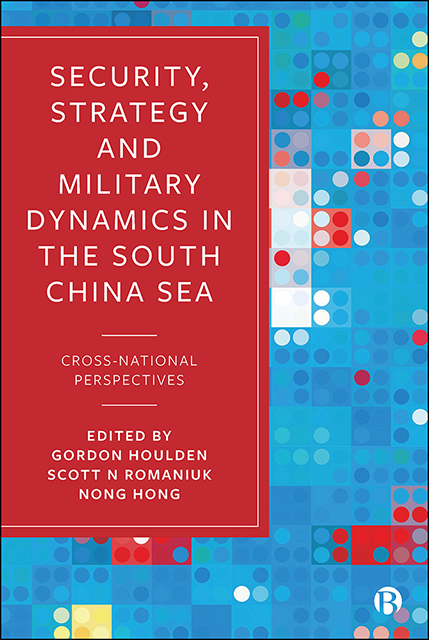Book contents
- Frontmatter
- Contents
- List of Tables
- Notes on Contributors
- Foreword
- Introduction: Strategic Challenges and Escalating Power Rivalry in the South China Sea
- 1 Between Competition and War: Complex Security Overlay and the South China Sea
- 2 The South China Sea as an Echo Chamber of Chinese Foreign and Security Policy
- Part I Claimants of the Contested South China Sea
- Part II Non-Claimants in Southeast Asia
- Part III Quadrilateral Security Dialogue States
- Part IV Non-Claimants in Europe and Eurasia
- Conclusion: Looking over the Horizon – Prospects for Settlement of the South China Sea Dispute?
- Index
12 - The United States and the South China Sea Question
Published online by Cambridge University Press: 13 April 2023
- Frontmatter
- Contents
- List of Tables
- Notes on Contributors
- Foreword
- Introduction: Strategic Challenges and Escalating Power Rivalry in the South China Sea
- 1 Between Competition and War: Complex Security Overlay and the South China Sea
- 2 The South China Sea as an Echo Chamber of Chinese Foreign and Security Policy
- Part I Claimants of the Contested South China Sea
- Part II Non-Claimants in Southeast Asia
- Part III Quadrilateral Security Dialogue States
- Part IV Non-Claimants in Europe and Eurasia
- Conclusion: Looking over the Horizon – Prospects for Settlement of the South China Sea Dispute?
- Index
Summary
The United States has no territorial claim in the South China Sea and does not take a position on the sovereignty of any of the geographic features in the SCS, but has urged that disputes be settled without coercion and on the basis of international law.
Introduction
The United States (US) has been a presence in East Asia since the early part of the 19th century. Over the decades that role grew, until, by 1945, Washington found itself the dominant power in the region. Since that time, regional powers have risen and fallen, but the US remains a critical player in the region. This chapter focuses on the importance of the South China Sea (SCS) to the US, and the evolution of its attitudes and actions toward the region. America's intentions in the SCS have changed little since the 19th century. Washington seeks to keep the peace, keep trade flowing through the region, prevent the rise of a dominant power in the region, and preserve its own freedom of action in the region, primarily through ensuring Freedom of the Seas. The rise of the People's Republic of China (PRC) since 1948 has proven to be the primary challenge to US objectives. Since 1948, Beijing has sought to expand its power and influence in any way that it could. With the massive growth of its economy, particularly since the 1980s, the PRC has become increasingly ambitious and belligerent in its actions in the SCS. Over that same period, US responses have become increasingly strident. This chapter will discuss US efforts in the region, focusing on the history of US involvement and the changing nature of US positions and responses to events in the region, particularly during the presidencies of Barack Obama and Donald Trump.
The US in the South China Sea up to 1945
American activity in the Western Pacific and the SCS began shortly after the founding of the Republic. As early as 1784, the first American merchant ship, the SS Empress of China, arrived in the region. Growing trade with China eventually drove the US in its westward expansion across the Pacific Ocean in the 19th century, culminating with the acquisition of the Philippines and other islands following the successful war with Spain in 1898.
But the acquisition of the Philippines was far from the first US interaction with the SCS area.
- Type
- Chapter
- Information
- Security, Strategy, and Military Dynamics in the South China SeaCross-National Perspectives, pp. 235 - 250Publisher: Bristol University PressPrint publication year: 2021



